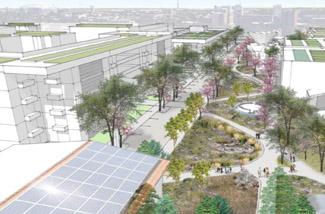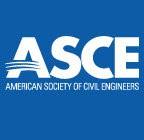2015 Campus RainWorks Challenge
In 2015, seventy-seven student teams from 26 states submitted green infrastracture designs for the fourth annual Campus RainWorks Challenge. These projects show how managing stormwater at its source can benefit the community and environment by reducing the burden on local water infrastructure, managing local flooding, reducing urban heat islands, and lowering energy demands. This round of competition encouraged students to learn about the current or potential impacts of climate change on campus and demonstrate how using green infrastructure practices on their campuses can build resiliency to those impacts while effectively managing stormwater runoff. In April 2016, EPA announced four winners and two honorable mentions for the 2015 Campus RainWorks Challenge. Thank you again to our 2015 Campus RainWorks Challenge Judges.
Congratulations to the Winning Teams!
First Place Winners
- University of Texas at Arlington (Master Plan category)
- University of Maryland, College Park (Demonstration Project category)
Second Place Winners
- Stevens Insitute of Technology (Master Plan category)
- University of California, Berkeley (Demonstration Project category)
Honorable Mentions
- University of Texas at Arlington (Master Plan category)
- Northeastern University (Demonstration Project category)
First Place Winner (Master Plan category): University of Texas at Arlington
The team’s design concept, Eco-Flow: A Water-Sensitive Placemaking Response to Climate Change, transforms the campus through green infrastructure placed in relation to the natural water flow of Trading House Creek. The creek flows from northwest to south connecting the campus. The plan proposes to increase biodiversity, restore soil quality and watershed hydrology, and implement photovoltaic cells to supply alternative energy. The plan has the potential to reduce stormwater runoff 25 inches annually, generate more than 1 million kilowatt hours each year, increase campus tree coverage 89 percent, and mitigate 5,000 tons of CO2.
Project Narrative | Design Board 1 | Design Board 2
Student Team: Baishaki Biswas, Sherry Fabricant, Jacob Schwarz (Landscape Architecture); Ahoura Zandiatashbar (Urban Planning).
Advisors: Taner R. Ozdil, PhD (Department of Planning & Landscape Architecture).
First Place Winner (Demonstration Project category): University of Maryland, College Park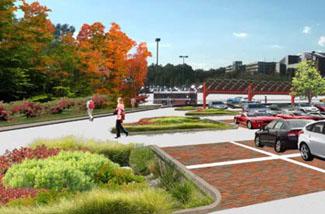
The design is centered on reimagining a major, five-acre parking lot to retrofit it for improved stormwater management. The design features reduce 40 percent of impervious surface; add over 17,000 square feet of new vegetation space, 56 new trees for shaded parking spaces, and 8,640 square feet of pedestrian space; and, reduce 12.3 metric tons of CO2 annually. The team’s design has good potential for implementing on other campuses.
Project Narrative | Design Board 1 | Design Board 2
Student Team: Kathleen Hayes, George Sorvalis, Matt Zerfas (Plant Science and Landscape Architecture); Emma Giese, Sharon Hartzell (Envrionmental Science and Technology); Jason Renkenberger (Civil Engineering).
Advisors: Dr. Victoria Chanse, Dennis Nola (Plant Science and Landscape Architecture); Michael Carmichael, Stephen Reid (Facilities Management); Dr. Mitch Pavao-Zuckerman (Environmental Science and Technology).
Second Place Winner (Master Plan category): Stevens Institute of Technology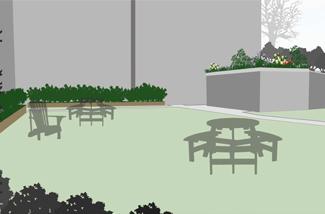
The team proposed the first stormwater management plan for the Stevens’ campus, The Living Laboratory. The design includes 29 green infrastructure techniques, which have been applied to problem areas to reduce runoff, contaminant discharge and potable water usage. The Living Laboratory provides a practical example for urban campus green infrastructure and introduces classroom and community educational opportunities. The team worked with Stevens Facilities and Events Management to ensure the proposed design is aligned with future growth of campus, can be maintained, is aesthetically pleasing and economically responsible.
Project Narrative | Design Board 1 | Design Board 2
Student Team: Adriana Herrera (Environmental Engineering); Zachary McKeehan, Taylor Race (Civil Engineering); Sabrina Smith (Engineering Management).
Advisors: Leslie Brunell, PhD, PE, Elizabeth Fassman-Beck, PhD, Firas Saleh, PhD (Department of Civil, Environmental, and Ocean Engineering)
Second Place Winner (Demonstration Project category): University of California, Berkeley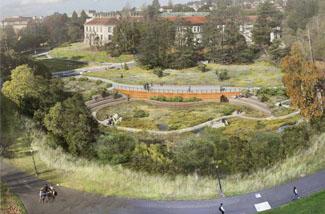
The team chose a creek site on campus that was the university’s first botanical garden with many artificial landscape features that cause drainage problems. While it is home to a legacy of exotic plants, the site lacks habitat conducive to supporting native species and reducing runoff. The team proposes a design that will store 37,000 cubic feet of stormwater runoff, increase pervious surface are by 33 percent and increase native plant species. The design has potential to reduce flooding and restore the ecological diversity of the area.
Project Narrative | Design Board 1 | Design Board 2
Student Team: Avery Hardy (Urban Studies & Forestry and Natural Resources); Kirsten Jurich, Katie McKnight (Environmental Planning); Ian McRae, Jason Prado, Rafael Tiffany, Ying Tan, Yiping Lu, Yue Pan, Junpei Asai (Landscape Architecture).
Advisors: Nathaniel Kauffman (Faculty) David Johnson, Tim Pine (Facilities).
Honorable Mention (Master Plan category): University of Texas at Arlington 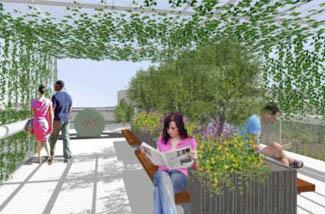
The North Central Texas area expects to see rising temperatures and increased flooding as the result of climate change. The University of Texas at Arlington is preparing for these changes as it plans construction for changing student needs as well as increased enrollment. Innovation Park is the student-proposed research quad that transforms 17 acres of parking lots, draining directly into Trading House Creek, into a solution that allows for increased storm intensity as well as considers higher temperatures. Innovation Park will incorporate bioswales, living walls, and extensive living roofs to mitigate heat gain on vertical and horizontal surfaces. Plantings are selected to provide maximum carbon sequestration and pollution filtration with as little irrigation as possible.
Project Narrative | Design Board 1 | Design Board 2 |
Student Team: Layal Bitar-Ghanem, Riza Pradhan, Kerry Gray-Harrison (Landscape Architecture); Somayeh Moazzeni (Urban Planning and Public Policy).
Advisors: Taner R. Ozdil, PhD (Department of Planning and Landscape Architecture)
Honorable Mention (Demonstration Project category): Northeastern University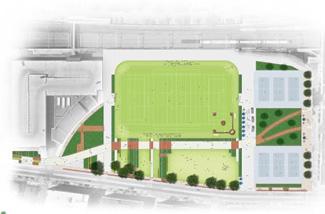
The project, Recharging the City, improves upon Northeastern plans for the development of William E. Carter Field with the specific goal of leveraging stormwater management infrastructure to address local environmental issues, increase site resiliency, and improve the social and environmental context of the site’s location in the City of Boston. With the Carter Field design, the team addresses three primary environmental issues: combined sewer overflows and pollution of the Charles River, groundwater level decreases and damaged building foundations, and sustainable water management education and outreach.
Project Narrative | Design Board 1 | Design Board 2
Student Team: Aaron Barbosa, Gregory Coyle (Civil Engineering); Jacob Abhishek (Sustainable Building Systems); Sean Kline, Sally Li, Molly McNally, Shane Sullivan (Landscape Architecture); Traver Normandi (Environmental Studies & Economics).
Advisors: Ed Beighley, Annalisa Onnis-Hayden, Department of Civil and Environmental Engineering (College of Engineering); Michelle Laboy, School of Architecture (College of Arts, Media & Design); Jerry Ziola, David Whelpley, College of Engineering (Facilities Division)
Cooperating Organizations
These cooperating organizations assisted EPA with judging and outreach:
American Society of Landscape Architects Exit
American Society of Civil Engineers Exit
Water Environment Federation Exit
To sign up for e-mail updates or ask a question about the Campus RainWorks Challenge, e-mail RainWorks@epa.gov.


